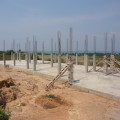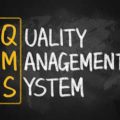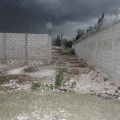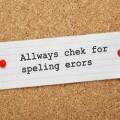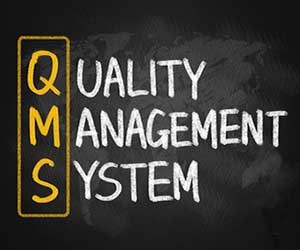
I listened to a presentation recently where the speaker suggested that the highest quality producer is usually the lowest cost one. Can that be true? And if so, how do you become part of that club?
The Cost of Quality (COQ), sometimes called Cost of Poor Quality (COPQ) is a measure of the cost of producing the quality of products to the minimum desirable level. Most companies measure the number of defective or below standard products, and the good ones even consider the cost of rework, correction, and warranty returns. But what if your organization looked at the complete product development system in order to prevent poor quality in the first place?
COQ is a measure of the cost an organization faces due to the production of substandard products and services. It has 3 components:
- Prevention
- Appraisal
- Failure
It is expressed in numerical form as a percentage of sales, and can be mathematically calculated using the above three factors:
COQ = Prevention + Appraisal + Failure
As you can see, failure is still considered but it is just one factor out of three.
Prevention
The best way to lower the cost of quality is to prevent poor quality products or services from being produced in the first place. This is where the biggest gains are possible. It is often the most underrated yet productive part of the COQ equation. Investment in prevention results in higher customer satisfaction, which is often difficult to measure but at the same time the most important factor to corporate success.
Naturally, there is a trade-off when investment is made in prevention (at the front end) which reduces the number of defective products coming out of the back end. So an investment in prevention is not purely a cost proposition. After increasing product quality, support and technical assistance staff can be reduced once the results are achieved.
As a matter of fact, I would suggest that prevention is the least capital intensive of the three.
Here are a few ideas to include in an effective prevention program:
- Training
- Failure Mode and Effects Analysis
- Pilot projects
- Design of Experiments
- Process Capability / Process Performance
How much would each of these items cost to your organization, and what productivity gains would be achieved?
Appraisal
This part of the equation represents the cost of measuring quality throughout the production process. You would be surprised how often managers or executives rely on customer feedback (the unsolicited kind) to determine the overall quality of their products. The measurement of product quality at the production level is an essential part of any business unit. If someone asked you what the quality of your products are, can you give them a good answer, with numbers? If you don’t know this, how are you to expand the business when you don’t have a strong sense of the quality of the products you are promoting?
Inspection, testing, and audits are used to determine quality. Unless the quality is 100%, they result in rework, scraps, and changes to workmanship, handling, specifications, and so forth. All of this is a cost, but an important one. The most important thing is prevention (above), so the better you are at that, the less you will spend on appraisal.
Failure
This factor in the equation represents external issues after the product has left the organization, such as warranty returns, rework, equipment replacement, and so forth. Clearly if the other two factors are done well, this, failure will be minimized, and this is the first priority. I believe you need a strong failure system in place but if the failure rate is high you need to go up the chain and consider prevention and appraisal first.
Failures can result in much more than the costs of returns and rework. Loss of orders, reputation, and future business are some of the more obvious consequences. Lawsuits and malpractice claims due to defective products or services can be a major one time cost. “Due diligence” is often a major consideration in the award of damages, and with a poor reputation the damages will not be on your side. Negotiations with suppliers and clients also take a turn for the worse, with future cost implications.
Typical Values
According to the Quality Digest, some typical values for Cost of Quality in the manufacturing industry are as follows:
| Industry | COQ as a Percentage of Sales |
|---|---|
| Aircraft engines / engine parts | 5.4 – 6.3 |
| Aircraft parts | 4.5 – 8.6 |
| Aluminum die castings | 5.3 – 7.1 |
| Aluminum extruded products | 4.4 – 7.0 |
| Automotive stampings | 5.3 – 7.0 |
| Engine parts | 5.0 – 7.1 |
| Fasteners | 6.2 – 7.1 |
| Forgings – non-ferrous | 5.9 – 6.9 |
| Mobile homes | 4.8 – 5.3 |
| Motor home / automotive bodies | 4.3 – 5.4 |
| Motor homes | 4.8 – 5.3 |
| Automotive parts / accessories | 6.1 – 8.0 |
| Motorcycles, bicycles / parts | 6.1 – 6.8 |
| Motors / generators | 5.2 – 6.1 |
| Storage batteries | 5.1 – 5.4 |
| Tubes / tires | 6.9 – 8.0 |
| Travel trailers / campers | 4.9 – 5.9 |
| Truck / bus bodies | 4.3 – 5.4 |
The ideal place is on the low end of the industry average values reported here. A COQ of zero is not the goal, because you need to spend some money on prevention, appraisal, and quality control. If you are on the high end of the range, you are not as efficient as your competitors. If you are below the range, you can increase probably increase spending customer satisfaction and still being cheaper than your competitors.
Example
Let’s say you are a furniture manufacturer with $1 million in sales. How do you calculate your cost of quality? Each of the three items should be itemized and listed. Man-hours and equipment can be calculated for each item.
- Prevention: Sending workers to training and improving processes to reduce defects. Six sigma projects are great for process improvement.
- Appraisal: Quality control processes, such as inspection before shipment, inspection of paint, and wood working equipment.
- Failure: Cost of warranty replacements, including the office work required to maintain the warranty program.
| Category | Description | Cost | COQ ($1 million in sales) |
|---|---|---|---|
| Prevention | Send workers to yearly workshop | 10 employees @ $2,500 = $25,000 | 2.5% |
| Appraisal | Inspect equipment every friday evening | 1 hour @ $45/hr x 52 weeks = $2,340 | 0.23% |
| Failure | Warranty returns | 15 warranty returns per year @ $5,500 = $82,500 | 8.25% |
| COST OF QUALITY | $109,840 | 10.98% | |
According to the table above, you are spending significantly more on quality than your competitors.
Have you ever calculated your Cost of Quality? What were the results and what did you learn from the exercise? Leave your comments below, I’d love to hear from you.
